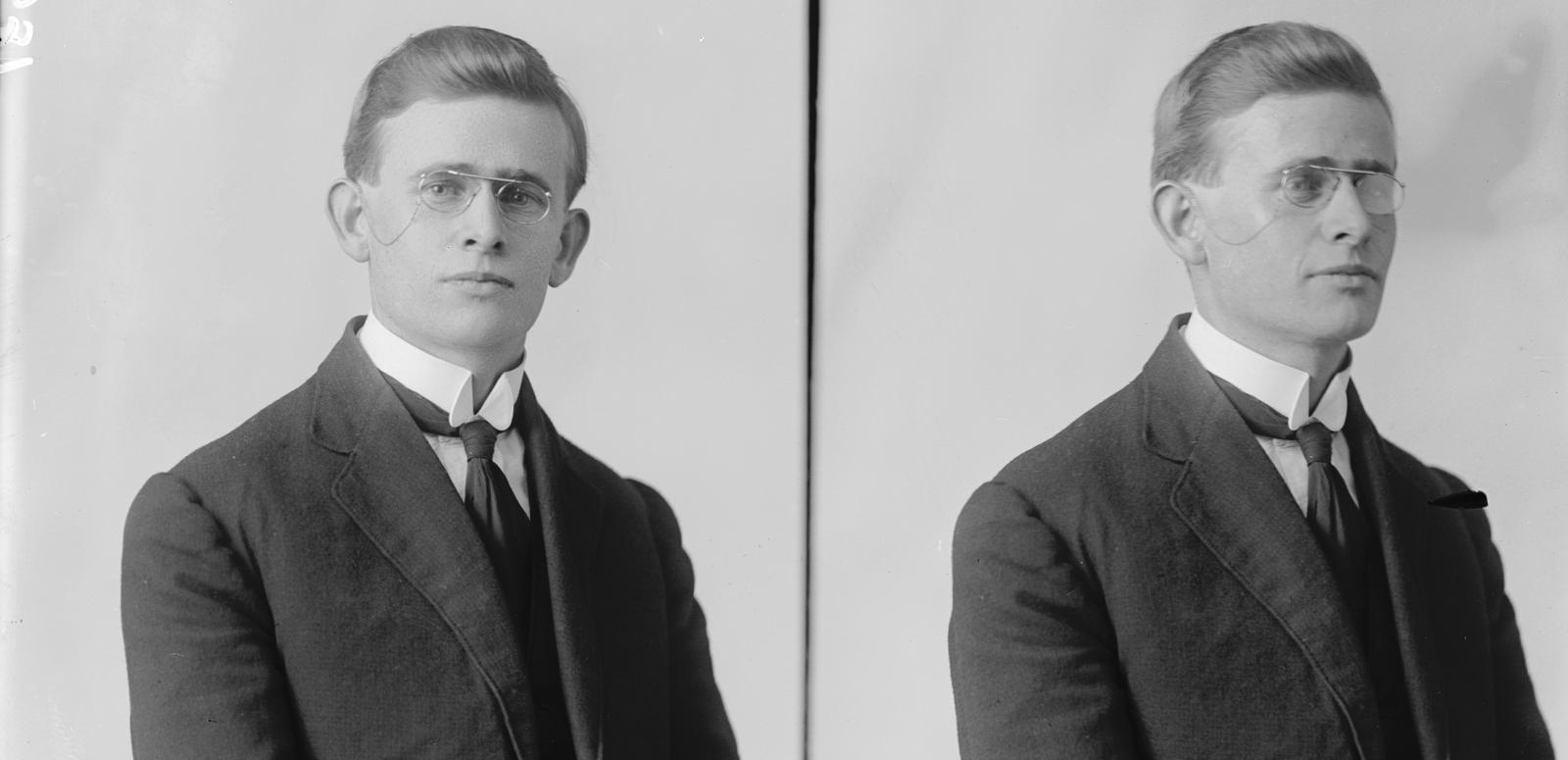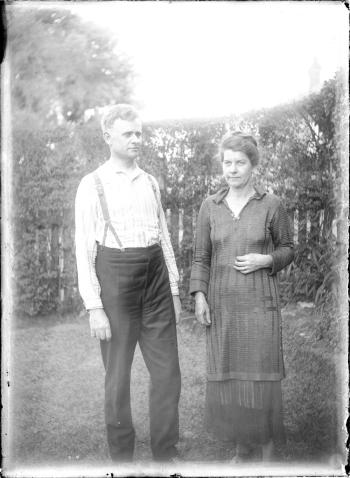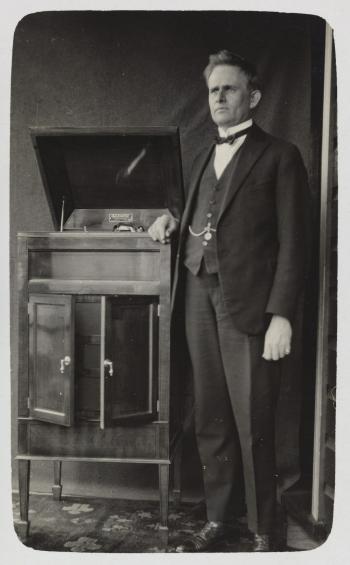The story behind ‘The Official Film of the Busy Bee, May 10th 1914’, Stuart Booty's film record of a community working bee to repair a Perth roadway.


The story behind ‘The Official Film of the Busy Bee, May 10th 1914’, Stuart Booty's film record of a community working bee to repair a Perth roadway.
The one and only surviving film made by filmmaker and entrepreneur Stuart Booty is a fascinating record of a day in 1914 where workers, local business owners and other members of the Perth and Fremantle communities banded together to fix the ‘Rotten Road’.
Preserved in the NFSA collection, Official Film of the Busy Bee, May 10th 1914 documents a ‘working bee’ to repair a long stretch of what is now the Stirling Highway, from the Victoria Road crossing in Buckland Hill to the tram terminus in North Fremantle, and the main road between Cottesloe and North Fremantle at the time.
The film includes footage of working bee organiser Reg Harrison; volunteers congregating at St George’s Terrace, near Howard St, Perth; views of the Rotten Road with the Mosman Rope Works in the background; the volunteer repairers at work splitting rock; children delivering stones to teams; Boy Scouts using semaphore to signal for stone supplies; and a goat pulling a cart:
The Official Film of the Busy Bee, May 10th 1914. NFSA title: 63732. Note: this film is silent.
It was their frustration at local government's failure to repair the road that inspired the citizens of Perth and Fremantle to devote Sunday 10 May 1914 to doing it themselves.
'We want a road at once... We want to get to Fremantle, or back to Perth, without risking our necks and vehicles, and who is to blame for the existing chaos called a road, or who is to pay for its transformation, does not concern us a two penny dump' (from The Daily News, 30 April 1914).

Altogether about 360 volunteers helped on the day including – as featured in the clip above – teams of children who carted stones and boy scouts who used semaphore to send signals between the 18 different gangs.
The organisers made available free food and beverages for the volunteers, including beer and whiskey. Mr Vic Newton of Vic Pictures agreed to run a matinee screening as a reward for the child helpers. The organisers promised a silver watch to the most energetic child and a case of Penfold’s wine to hardest working adult team.
The working bee brought together people from all parts of society who were keen to see the road fixed or to be seen fixing a problem which was vexing the community.
According to the Sunday Times (13 September 1936), they included 'suburban mayors, councillors, publicans, saints and several sinners'.
In the film, we see David John Simcock – who was known as ‘Pink Top’, because of his red hair. Simcock owned fruit shops in Perth and Fremantle and was killed in action in Gallipoli the following year. Also present was Lieutenant Colonel Thomas John Todd, veteran of the Boer War, who went on to be Commanding Officer of the 10th Light Horse Regiment in Gallipoli.
Working bee organiser Reg Harrison, the owner of the Criterion and Rockingham Hotels, also sponsored the film and engaged Stuart Booty to make it. Stuart in turn allowed Fred Murphy to film certain scenes. Murphy went on to become a veteran cinematographer in Western Australia and credits Stuart with giving him his introduction to filmmaking.

Born in Sydney in 1889 and raised in Perth, Stuart Booty was a filmmaker, inventor of the Vitavox gramophone and the owner of Vitavox Records. As an entrepreneur, he was driven by his fascination with emerging and burgeoning technologies, such as electricity, x-ray, film and recorded music.
In 1910, Stuart was working for the Auxetophonoscope Company, screening films in Bunbury, Meekatharra, Collie, Kalgoorlie and Carnarvon. Auxetophonoscope was an early, but crude, form of the talkies, using a gramophone and telephony to sync moving image with sound. In 1911 he travelled to Java and the Straits Settlements with the Auxetophonoscope and gained further experience in the film trade.
Between 1913 and 1916, Stuart and his business partner Arthur Farrant shot 26 short films with a camera he designed and built himself. Produced with a Perth audience in mind, subjects of these films included: March of the Light Horsemen Through the City, A Day at the Waifs Home and the Opening of the YMCA Social Hall at Blackboy Hill.
In October 1968, Mr RC Harrison of Carnarvon – working bee organiser Reg Harrison's grandson – donated the film to the WA Department of Education.
The following year, cinematographer Fred Murphy – who shot part of the Busy Bee film – explained that the surviving film is an edit of the original:
‘When I was in America I met the famous photographic chemist Crabtree of Rochester Park, New York. And he divulged to me a formula for the preservation of film to last some years. And Reg Harrison who did this working bee film came to me in 1920 and said could I make a print to last a long time, so I re-edited the film and made a new print of it. This is the film which you now have in Visual Education [at the WA Department of Education] but the original was 400ft in length. I imagine that young Harrison of Geraldton had only a small section of the film.’
The NFSA holds a nitrate copy of the 1914 Busy Bee film on 1920 film stock, and this is the re-edited version that Fred referred to in 1969. The location of the original 1914 film is unknown.
Explore more films like this on the NFSA Films and NFSA YouTube channels.
Main image: Studio portrait of Stuart Booty, 1916. Courtesy: State Library of W.A. NFSA title: 1563247
The National Film and Sound Archive of Australia acknowledges Australia’s Aboriginal and Torres Strait Islander peoples as the Traditional Custodians of the land on which we work and live and gives respect to their Elders both past and present.